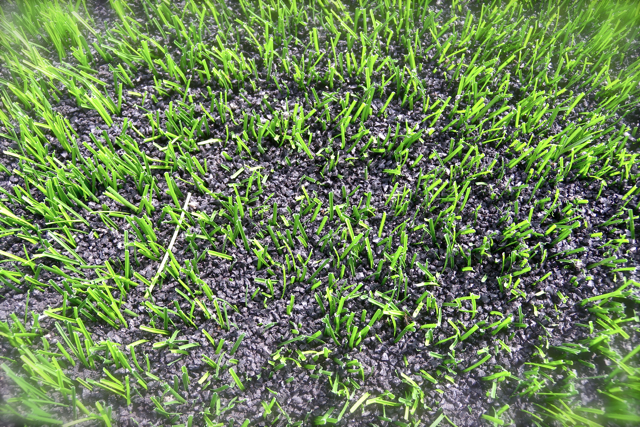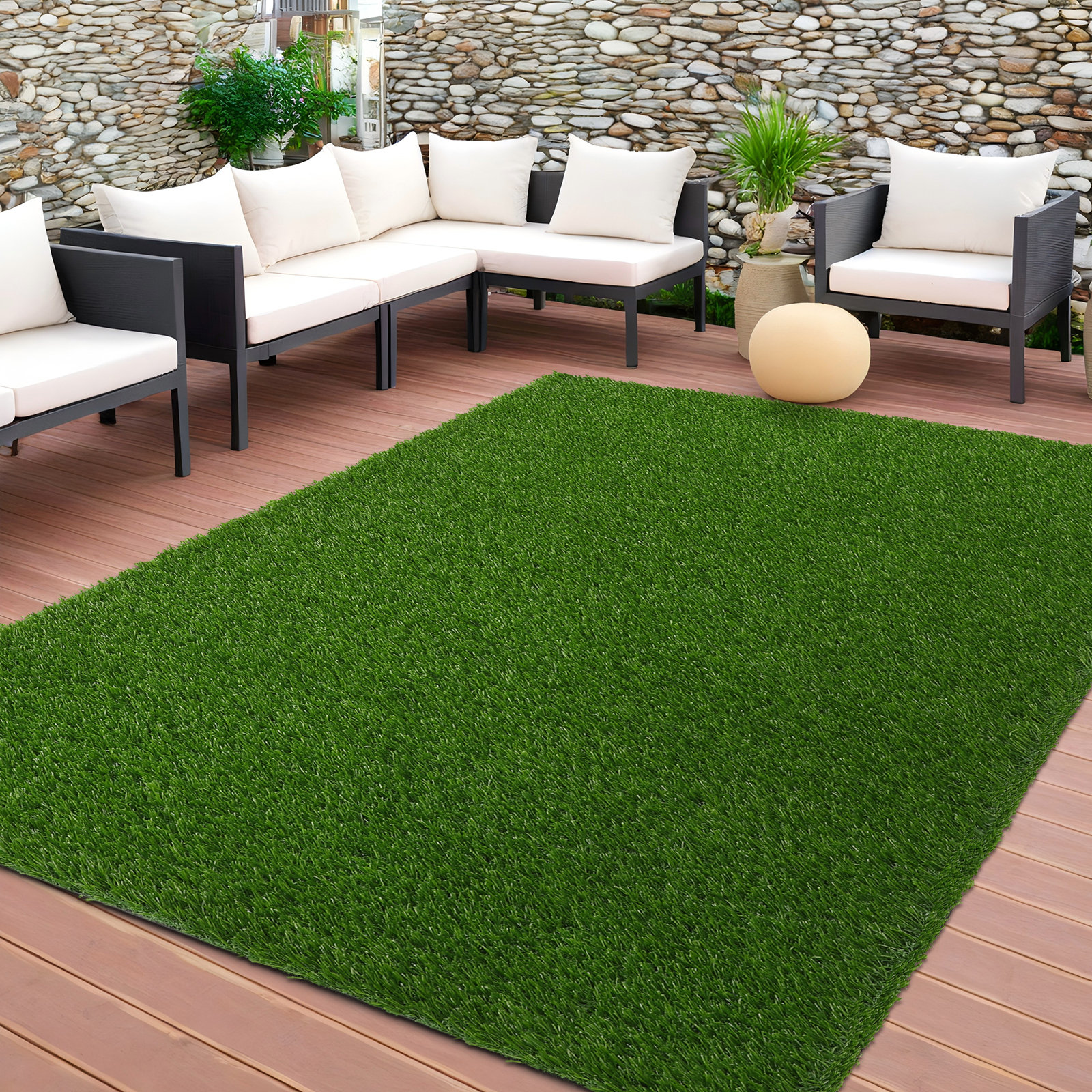Weather-Resistant Arizona Artificial Turf for Residential and Business Applications
Weather-Resistant Arizona Artificial Turf for Residential and Business Applications
Blog Article
Look Into the Environmental Advantages of Opting for Synthetic Grass Solutions
The adoption of fabricated grass remedies offers an engaging opportunity to resolve pressing ecological challenges. By substantially lowering water use and decreasing the application of dangerous chemicals, these choices not just promote lasting landscape design but likewise protect neighborhood ecological communities. Moreover, the reduced carbon impact linked with reduced upkeep tasks adds to a more sustainable approach to land monitoring. Nonetheless, the implications of these benefits expand beyond simple preservation initiatives, questioning regarding their lasting impact on habitat conservation and overall eco-friendly equilibrium. Discovering these dimensions discloses a complex interaction worth considering.
Water Preservation Perks
One of the most significant advantages of artificial turf is its capacity to save water. In comparison, fabricated turf does not require watering, substantially decreasing the total demand for water sources.
By eliminating the demand for routine watering, artificial grass adds to lasting landscape practices and assists mitigate the environmental impact of too much water intake. Moreover, the conservation of water includes the reduction of drainage, which can lead to soil disintegration and waterway contamination.
Additionally, the setup of synthetic grass allows house owners and districts to allocate water resources extra efficiently, concentrating on vital usages such as drinking water and agriculture. The shift in the direction of fabricated turf not just advertises liable water usage however likewise lines up with more comprehensive ecological objectives targeted at maintaining all-natural sources.
As communities progressively prioritize sustainability, the water preservation advantages of fabricated lawn provide an engaging instance for its fostering in industrial and household landscape design tasks.
Lowered Chemical Use
The change to synthetic grass considerably reduces the reliance on chemical treatments commonly made use of in natural yard upkeep. Standard grass administration commonly involves the application of herbicides, pesticides, and plant foods to advertise growth and control insects. These chemicals can position dangers to human health, regional wildlife, and the setting, adding to soil and water contamination.
In comparison, synthetic lawn gets rid of the demand for these hazardous substances. By lessening the release of synthetic substances into the ecosystem, man-made turf promotes much healthier dirt and water systems.
Furthermore, the absence of chemical runoff related to synthetic grass setups assists shield local rivers from pollution, sustaining marine life and maintaining biodiversity. Turf installation phoenix az. As neighborhoods significantly prioritize sustainable methods, going with synthetic grass provides a feasible remedy that straightens with environmental conservation goals. With this change, homeowner can enjoy lush eco-friendly spaces without compromising environmental health and wellness, leading the way for a much more lasting future
Reduced Carbon Footprint

In addition, the setup of synthetic grass can lead to considerable water preservation. Natural yards need substantial quantities of water for watering, which not only adds to the carbon footprint connected with water extraction and treatment however also stress regional water sources. On the other hand, synthetic grass needs minimal upkeep, requiring no watering, thus dramatically reducing water usage and its linked energy costs.
Additionally, the durability learn the facts here now of synthetic grass useful link adds to its decreased carbon effect. With a life expectancy of as much as 15 years or more, the need for frequent replacements is lessened, causing much less waste and reduced energy usage in manufacturing and disposing of traditional yard choices. Generally, synthetic grass presents a sustainable alternative for eco aware landscape design.
Habitat Preservation
Environment conservation is an important consideration in the dispute over landscape design options, especially when contrasting synthetic grass to natural yard. All-natural grass yards often call for considerable maintenance, consisting of using pesticides, plant foods, and herbicides, which can detrimentally affect local communities. These chemicals can seep into the soil and rivers, damaging native vegetation and fauna and disrupting local habitats.
Artificial turf eliminates the demand for harmful chemicals, thus securing close-by wildlife and preserving the stability of bordering ecological communities. The installment of artificial turf can lead to the conversion of previous yard locations right into even more biodiverse landscapes, such as pollinator gardens or native plant areas, which can support neighborhood wild animals.
Ultimately, the shift to synthetic grass not just saves water and reduces maintenance efforts however also fosters an extra unified relationship between human tasks and the native environment, promoting environment conservation at the same time.
Long-Term Sustainability
Lasting sustainability is a vital consider assessing the benefits of fabricated grass over conventional turf yards. Among one of the most significant benefits of synthetic grass is its longevity; it can last as much as 15-20 years with marginal maintenance, whereas natural turf calls for frequent reseeding and substitute. This durability decreases the demand for constant sources, such as water, fertilizers, and pesticides, which are essential for maintaining a healthy grass lawn.
Furthermore, man-made lawn adds to a decrease in carbon discharges linked with grass treatment equipment. Traditional yards typically need gas-powered recommended you read mowers, leaners, and blowers, all of which add to air pollution. Turf installation phoenix az. On the other hand, artificial lawn removes the requirement for such tools, advertising a cleaner atmosphere
Additionally, the production of synthetic grass progressively utilizes recycled materials, improving its sustainability account. As suppliers adopt eco-friendly methods, the ecological impact of man-made lawn proceeds to lessen.

Final Thought
The fostering of synthetic grass options offers considerable environmental benefits, consisting of substantial water preservation, reduced reliance on damaging chemicals, and a lower carbon impact. Artificial grass help in preserving all-natural habitats by reducing land disturbance and promoting long-term sustainability with the use of durable materials. Jointly, these variables highlight the possibility of synthetic grass to add positively to ecological health and provide a practical choice to standard landscape design practices in a significantly resource-conscious world.
In contrast, man-made lawn does not require watering, significantly reducing the general need for water resources. By lessening the launch of synthetic compounds into the ecological community, fabricated turf advertises healthier dirt and water systems.
Additionally, the setup of man-made lawn can result in considerable water conservation. In contrast, man-made grass needs marginal maintenance, requiring no watering, consequently substantially minimizing water usage and its connected power expenses.

Report this page